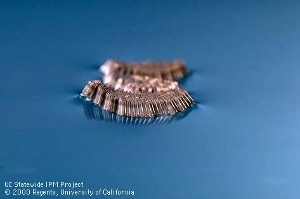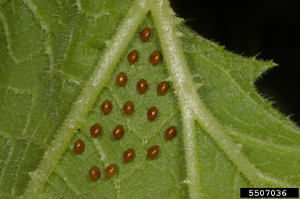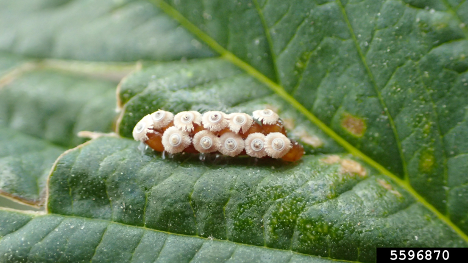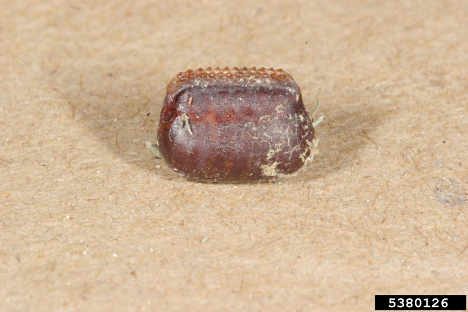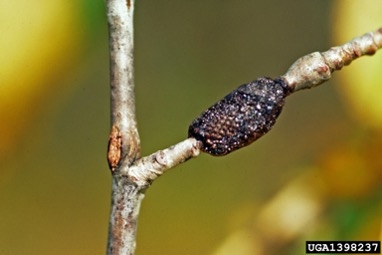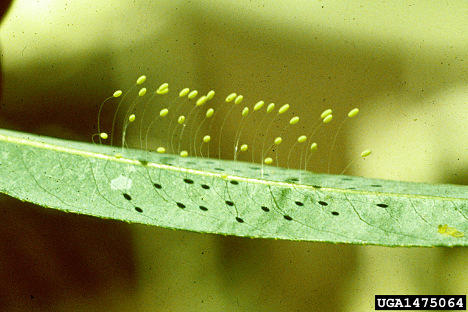Below are answers to the 2023 Easter Egg Hunt! How did you do?
Some mosquitoes lay single eggs on water surfaces, while others, like Culex species, lay batches of 100 or more eggs, called rafts, pictured above. Other species lay single eggs just above the water line in moist soil, tree holes, or containers where later flooding is likely. Eggs deposited on water surfaces usually hatch within a couple of days, but eggs laid on the sides of saucers under plants, jars, cans, or soil surfaces won't hatch until flooding occurs, which can be months or even years later. Read the Pest Notes: Mosquitoes to learn more.
Squash bug eggs are laid in groups or clusters of 15 to 40 on the underside of leaves in the spring. The bugs hatch and feed on squash plants as juveniles and adults. See the Pest Notes: Squash Bugs for more information about these garden pests.
Spined assassin bug eggs are laid in groups. These beneficial insects or “natural enemies” are predators that feed on other small to medium sized insects. Visit the UC IPM website to learn more.
Cockroach eggs are laid in a case, called an ootheca. American cockroaches carry the egg case from their abdomen for only a short time before depositing it in a suitable location where it incubates for weeks or months. View Pest Notes: Cockroaches to learn more.
Green lacewing eggs are laid on slender stalks. Female lacewings lay about 100 to 300 eggs during their several-week lifespan. Larvae and adults are predators of soft-bodied insects. Read more about these natural enemies and learn to recognize them on the UC IPM website.
